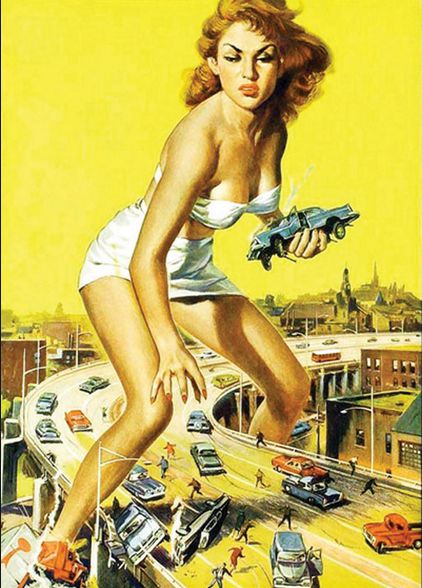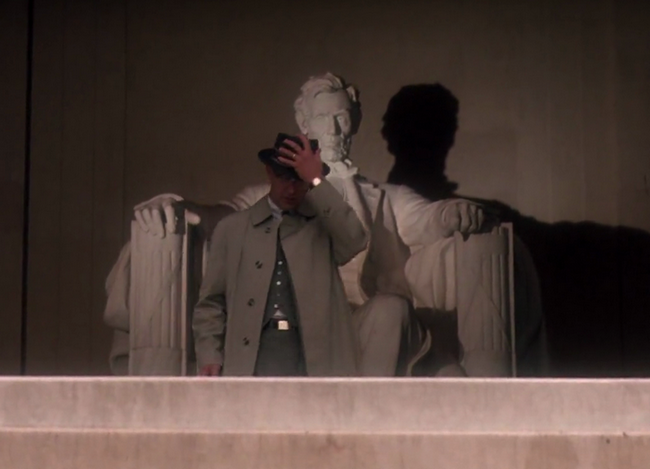Fenris Wulf: Loki’s Child (2016 edition). A witty political satire using pop music! I bet you’re delighted already.
A guest post by David Gerard.
Every field has its standard ways to fuck up. Experienced artists never do these in public, but you’ll see the lesser lights fall for them if you go looking. Someone gets a rush of blood and is struck by aninspiration to do something different, something the big guys aren’t doing, for a new take on things! Not realising that the experienced artists don’t do these things because they don’t work.
Like writing a novel about the pop industry. No, better: a political allegory in the form of a novel about the pop industry. No, better still: a right-wing fever dream political allegory in the form of a novel about the pop industry. Yep, that’ll show ’em all!
Phil Sandifer tweeted a “hey, look what I just stepped in”:

As a connoiseur of the worst of popular culture — and novels about the music industry are definitely the worst of popular culture — I foolishly looked. (Doing a great swan dive naked into the abyss and wallowing while sending back reports probably involves staring at some point.)
The least-unreadable examples of this species of folly, that don’t make you shout “WRONG! WRONG! BULLSHIT!” twice a page, tend to be thin fictionalisations of real events; plenty of fucked-up shit happens in the music industry that makes people go “someone should write a book about this.” Platinum Logic by Tony Parsons fails as an even slightly coherent novel, but every lurid and tawdry incident in that book is a version of something that happened, and spotting the players is the fun part.
There are genuinely good novels that have the music industry as a theme — Pratchett’s Soul Music, Banks’ Espedair Street — but these tend not to be about the music or the industry as such, and avoid going into too much detail even as they slip in the in-jokes. Even The Commitments, which is literally about a band. They resist the urge to be didactic. It’s a trepidatious endeavour, though: get the details even slightly wrong and you look like a fool.
Fenris Wulf gets the details mostly right. The problem is everything else.
“Hi, I’m Fenris. I’ve considered myself to be a LaVeyan Satanist for about 10 years, and I also embrace a Lokian version of Asatru, as my name indicates.”
Loki’s Child is published by Castalia House, i.e. Vox Day, the abovementioned human dumpster fire, who is now most famous for doing his damnedest to fuck up the Hugo Awards with the Rabid Puppies.
I thought Day was the author of this thing — “Fenris Wolf” was the name of his 1990s video game studio, and he was once in a band with minor hit records so he’s brushed up against the business. But Vox is not known for either patience or attention to detail, and this is a work the author’s been polishing and polishing for years — he put the first version up as Record Producer from Dimension X in 2005, then publicised the rewrite as Loki’s Child in this 2011 post to a fan board for Ayn Rand’s right-wing political philosophy Objectivism:
…The novel gets progressively more ingenious, and it exposes the disgusting evil of the nihilist Left in a way that hasn’t been done before.

 Hello again, my fellow muggles.
Hello again, my fellow muggles.  When Christian monks and missionaries first reached Ireland, Scotland and the Isle of Man, they brought their gods, language, writing and canon with them. And with these tools, they set about the process of assimilating the indigenous gods, culture, history and tradition they found there. One problem they had was what to do with the in-depth genealogies the locals in Ireland had that told tales of a series of invasions and resettlement of the island by successive groups of immigrants, some of which seemed to have a decidedly divine and magickal air about them. As this clearly did not mesh with what their own mythologies told them about the origins of humanity, they put these stories to the pen and retconned them as the supporting cast, ungods and demons of what they interpreted as the definitive Christian canon.
When Christian monks and missionaries first reached Ireland, Scotland and the Isle of Man, they brought their gods, language, writing and canon with them. And with these tools, they set about the process of assimilating the indigenous gods, culture, history and tradition they found there. One problem they had was what to do with the in-depth genealogies the locals in Ireland had that told tales of a series of invasions and resettlement of the island by successive groups of immigrants, some of which seemed to have a decidedly divine and magickal air about them. As this clearly did not mesh with what their own mythologies told them about the origins of humanity, they put these stories to the pen and retconned them as the supporting cast, ungods and demons of what they interpreted as the definitive Christian canon. Okay, the podcast isn’t literally fifty feet. Because we don’t use spools of magnetic tape for recording anymore. We use computers. And so trying to measure a podcast as such would be ludicrous.
Okay, the podcast isn’t literally fifty feet. Because we don’t use spools of magnetic tape for recording anymore. We use computers. And so trying to measure a podcast as such would be ludicrous. It’s not about changing history; not really. One does change history, yes, but that is not the point, at least in the conventional sense. Normally we change history to alter present circumstances, after all. Here, however, we change history to alter the future, with the present remaining not fixed, but largely conceptualized as a somewhat indifferent midpoint between the two poles – strangely unimportant to the actual story being told.
It’s not about changing history; not really. One does change history, yes, but that is not the point, at least in the conventional sense. Normally we change history to alter present circumstances, after all. Here, however, we change history to alter the future, with the present remaining not fixed, but largely conceptualized as a somewhat indifferent midpoint between the two poles – strangely unimportant to the actual story being told.  And
And